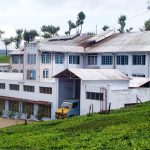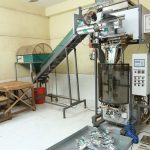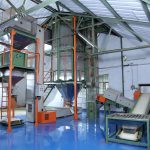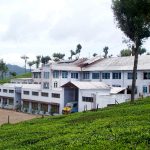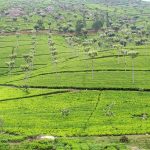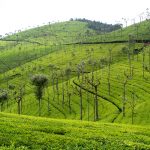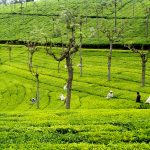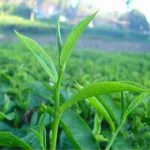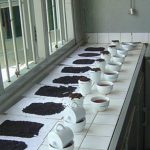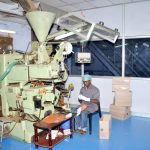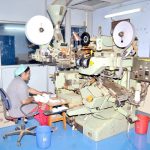
Matheson Bosanquet ‘s plantations are in the Nilgiris Hiiis of South India has two tea plantations namely Coonoor Tea Estates and Parkside Tea Estates. These plantations are situated at an altitude ranging from 1600 to 1900 meters above mean sea level on the eastern slopes of Nilgiris. With over nine decades of experience in managing tea plantations and proven track record in producing quality tea, our estates Coonoor and Parkside are names to reckon in South India
The Coonoor Tea Estates Company is situated in the Nilgiris Hills 14 of South India has two tea plantations namely Coonoor Tea Estates and Parkside Tea Estates. These plantations are situated at an altitude ranging from 1600 to 1900 meters above mean sea level on the eastern slopes of Nilgiris.
The annual production of Black Tea is around 2 Million Kilograms. Coonoor Tea Estate has a capacity to produce 900 Thousand Kilograms green tea annually in addition to black tea production. Over 60% of its annual production of High grown flavoury orthodox teas are directly exported to the United Kingdom, USA, Russia, Japan, Poland, Germany, Pakistan and Middle East.
Having a pro active management team over the years has resulted in major plantation area being replanted with high yielding, flavoury, aromatic clones. Having achieved acclaim for its orthodox teas these plantations have forayed into production of speciality teas which are a connoisseur’s delight such as Musketel Silver Tips, Green Handmade, Oolong, White teas, SFTGFOPs, Green Specialities, etc.,
Parkside Factory and Coonoor Factory follow all aspects of GMP (Good Manufacturing Practices) and is in the process of HACCP certification (Hazard Analysis Critical Control Point) The Management gives strong emphasis on sustainable agricultural and Eco friendly practices and resultant teas are fully compliant with EU / Codex / Japan norms for pesticide residue limits. It also adheres to all norms of Ethical trade practices. A high motivated and skilled workforce ensures consistent good quality and safe product for its consumers.
Parkside Estate
The most wellknown mark in South India and the Flagship of the Coonoor Tea Estates Co. Ltd, the Parkside Factory is situated at 1860 meters above mean sea level has a capacity of two million kgs of Orthodox Black Tea.
One of the finest teas of South India emerge from this abode of quality and are well known for their mellow fragrant and aromatic cups. A Pioneer in harnessing the power of the Sun to ensure considerable reduction of Fossil fuels with a tilt towards green energy.
Coonoor Tea Estate
The factory located overlooking the beautiful town of Coonoor at a height of 2035 meters above mean sea level is one of the highest in South India. It has capacity to produce one million kilograms of one of the most flavoury Orthodox Black teas and Green teas.Over 60% of its annual production of high grown flavor orthodox teas are directly exported to the United Kingdom, USA, Russia, Japan, Poland, Germany, Pakistan and Middle East
Our estate factories produce 2.5 million kgs of tea. A Boutique Tea manufacturing unit has been setup to cater connoisseur seasonal tea drinkers in mature markets. These teas are becoming increasingly popular in fine tea houses worldwide.
“He boils milk with fresh ginger, a quarter of a vanilla bean, and tea that is so dark and fine-leaved that it looks like black dust. He strains it and puts cane sugar in both our cups. There’s something euphorically invigorating and yet filling about it. It tastes the way I imagine the Far East must taste.”
– Peter Hoeg, Smilla’s Sense of Snow
It is an old planters saying that “good tea is made in the field – not in the factory”. The journey of a tea plant starts in the nursery where young plants are reared for 18 months. Once transplanted in the main fields, they are lovingly tended till it attains full maturity in 4 to 5 years. When mature, the bushes “flush” at regular intervals.
At the crack of dawn, while the flush is still moist with the dew, the tea pluckers go to work, plucking the fresh shoots off the bushes which is then inspected by the supervisory staff. The fresh leaves arrive in the factory from the field, where they are manually sorted to remove any unwanted leaf.
Withering is done by spreading the leaf in troughts. It is sifted rolled again, cut and processed till the final granules are produced. Different processes are involved for manufacturing various categories of tea, which is then sorted into different grades. On the basis of which exercise the blender decides on the required cup.
Process
With black tea, the gathered leaves are exposed to the air for a longer period to reduce moisture, then gathered up and tossed until soft and flaccid, after this they pass to the rolling table, and are rolled into balls and subjected to pressure which twists them and gets rid of the excess moisture; they are then shaken out on flat trays, again dried and after further exposure called fermentation, spread out and exposed to the heat from which process they become black in color. After this they are winnowed, screened, and graded into different varieties.
From The Cradle – The cup that cheers starts from here. Selectively picked tender shoots with soft feminine hands to ensure that each sip you take gives the maximum satisfaction and engulfs you with a complete sense of well being..
The Treasure Chest – Speciality bouquet for the connoisseur Green Tea for the health conscious Amber for the moon gazar Mellow cup for the lazy afternoon Brisk sip for the man on the move Strong steaming mug for the Dare Devil
The Course to Flavour – Controlled oxidation with optimum humidity level to produce that lingering aroma and flavour.
Jade, Opal, Amber to Rubies – The three O’s to quality Ocular, Olfactory and Organoleptic evaluation by experts results in consistent quality.
Head to toe in sparkling Glow – Strong emphasis on hygiene in the production process-to produce a quality and safe product for the consumers.
Moisture Determination – All consignments undergo stringent post manufacture and pre depatch scrutiny for the lasting freshness till the last sip.
Biological Name: Camellia Sinensis
Camellia sinensis is an evergreen shrub, which, if left to grow wild, can reach heights of more than thirty feet. On the estates, tea bushes are generally kept trimmed to a comfortable picking height of two to four feet. The bark is rough and slightly gray. The leaves are serrated, dark green and elliptical, formed on short stalks. Young leaves have a silver tip because of the presence of light hair that is prized in certain high quality teas. Small white flowers are sparse. Seeds are contained within a smooth, round, three-celled hull, like a small nut.
Matheson Bosanquet Ent. Pvt. Ltd.
MathesonBosanquet, having its registered office in Bangalore, started in the early 1920s. It was originally christened as Estates and Agencies Ltd back in 1927 by Jardine Matheson of London.
Other Links
Corporate Office
Matheson Bosanquet Enterprises Pvt. Ltd.
26/1, Sua House, Kasturba Cross Road
Bangalore – 560 001
Karnataka, India

